Map Based Questions: The Rise of Empires | Social Science Class 7 - New NCERT PDF Download
Q.1: On the map, locate Pataliputra, Sarnath, and Dhauli. For each location, identify one significant feature or event from the Mauryan period mentioned in the chapter. Explain how the geographical location of Pataliputra contributed to its role as the capital of the Mauryan Empire.
Ans: Pataliputra: Locate near modern-day Patna, Bihar.
- Significant Feature: Capital of the Mauryan Empire, a bustling center of governance and commerce with palaces, well-planned streets, and a fortified drawbridge.
- Geographical Advantage: Located in the resource-rich Ganga plains with fertile land, rivers for trade and transport, and access to forests for timber and elephants.
Sarnath: Locate near Varanasi, Uttar Pradesh.
- Significant Feature: Site of Ashoka’s pillar with the lion capital, symbolizing royal power and the Buddha’s teachings.
Dhauli: Locate near Bhubaneswar, Odisha.
- Significant Feature: Site of a rock sculpture of an elephant symbolizing the Buddha and an Ashokan edict.
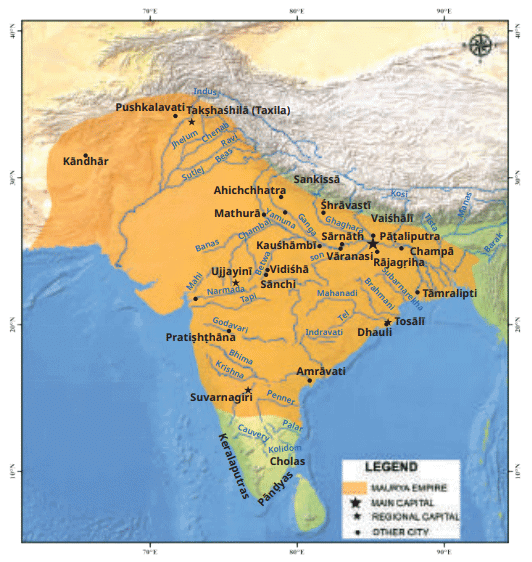
Q.2: On the map, trace the Uttarapatha and Dakshinapatha trade routes. Identify two major cities along each route mentioned in the chapter or implied by its context. Explain how controlling these trade routes contributed to the economic strength of the Mauryan Empire.
Ans: Trace Uttarapatha (northwest to east across northern India) and Dakshinapatha (north to south, connecting central to southern India).
- Uttarapatha Cities: Pataliputra (Bihar) and Takṣhaśhila (modern-day Taxila, northwest).
- Dakshinapatha Cities: Kaushambi (Uttar Pradesh) and Kaveripattanam (southern India, implied as a southern trade hub).
- Economic Strength: Controlling trade routes allowed the Mauryas to access diverse goods (textiles, spices, gems) and collect taxes, boosting the treasury and supporting military campaigns.
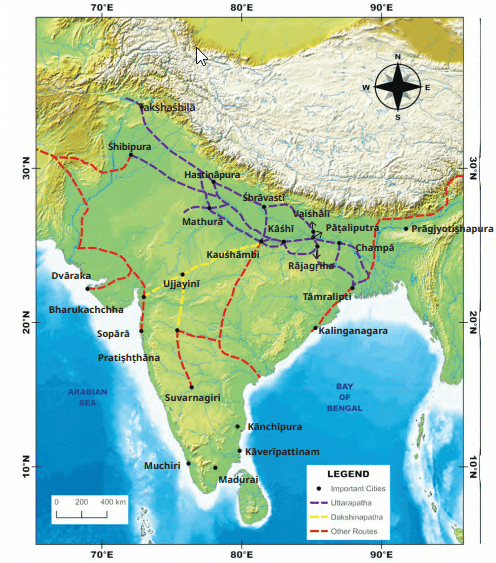
Q.3: On the map, mark three locations where Aśhokan edicts were inscribed, as mentioned in the chapter: Girnar, Kalsi, Mansehra and Dhauli.
Ans: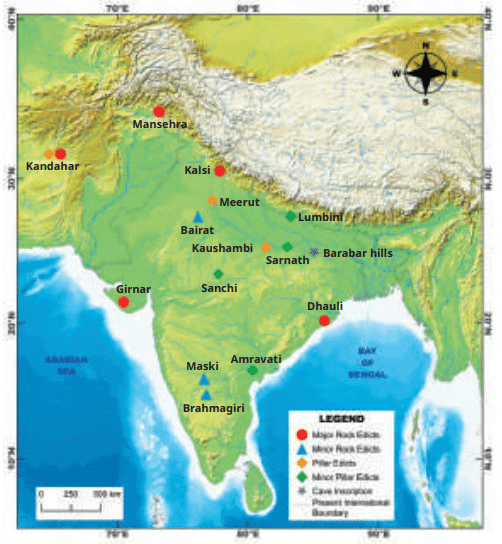
Q.4: On the map, mark Takshashila (modern-day Taxila) and Sanchi. What was its significance during this period?
Ans: Mark Takshashila in northwest India (modern-day Taxila, Pakistan).
Significance: A renowned university where Kautilya taught, contributing to intellectual and strategic advancements that aided Chandragupta Maurya.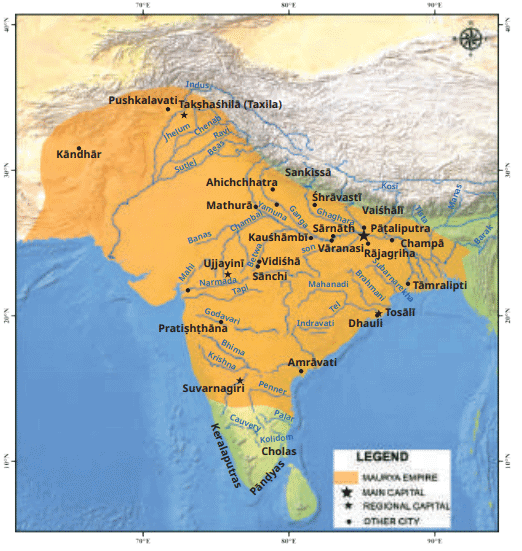
Q.5: On the map, plot a route from Kaushambi to Kaveripattanam as referenced in the chapter’s. Identify one major trade route (e.g., Dakshinapatha) used for this journey. Suggest possible modes of transport and estimate the travel time with reasonable halts.
Ans: Plot a path from Kauśhāmbī (Uttar Pradesh) to Kāveripattanam (Tamil Nadu), following the Dakshinapatha trade route.
Trade Route: Dakshinapatha, connecting northern and southern India.
Transport and Time: Modes included walking, bullock carts, or horseback. Travel could take 2–3 months, with halts at trade hubs like Ujjain or Vidisha for rest and resupply.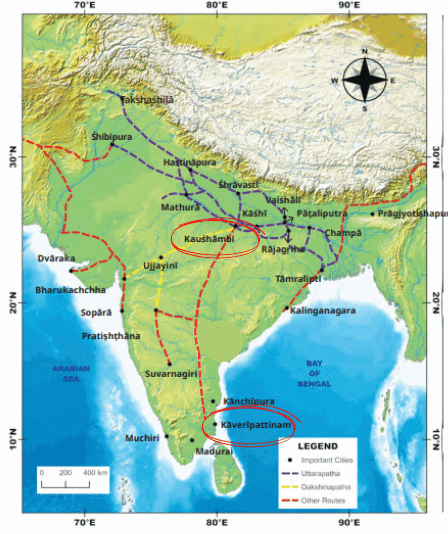
|
23 videos|204 docs|12 tests
|
FAQs on Map Based Questions: The Rise of Empires - Social Science Class 7 - New NCERT
| 1. What were the main factors that contributed to the rise of empires in ancient history? |  |
| 2. How did geography influence the development of empires? |  |
| 3. What were some common features of early empires? |  |
| 4. Can you give examples of famous empires and their notable achievements? |  |
| 5. How did the decline of empires typically occur? |  |






















